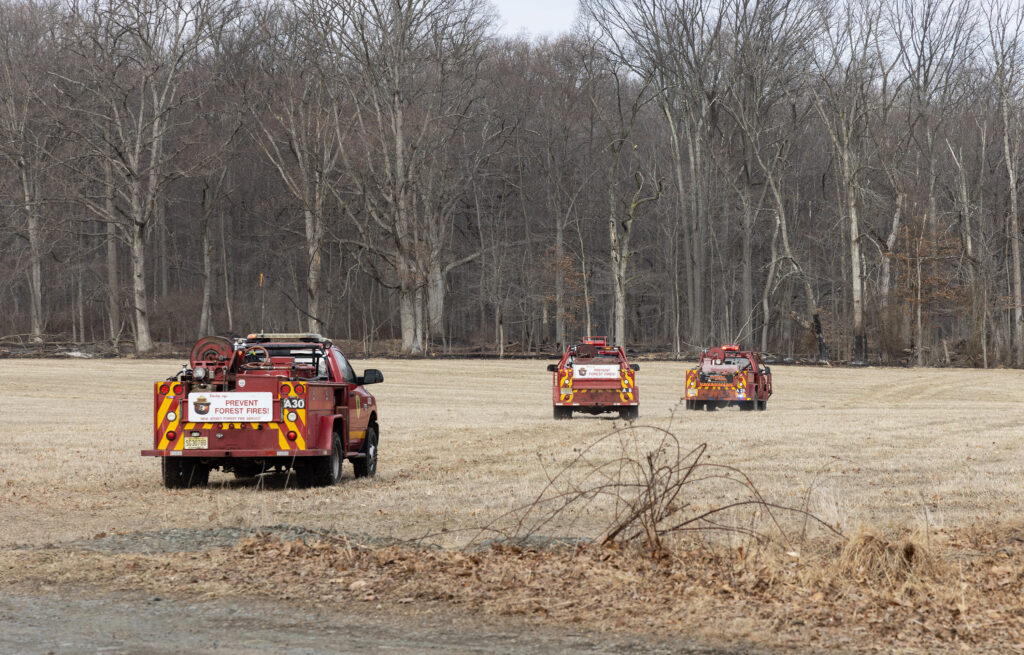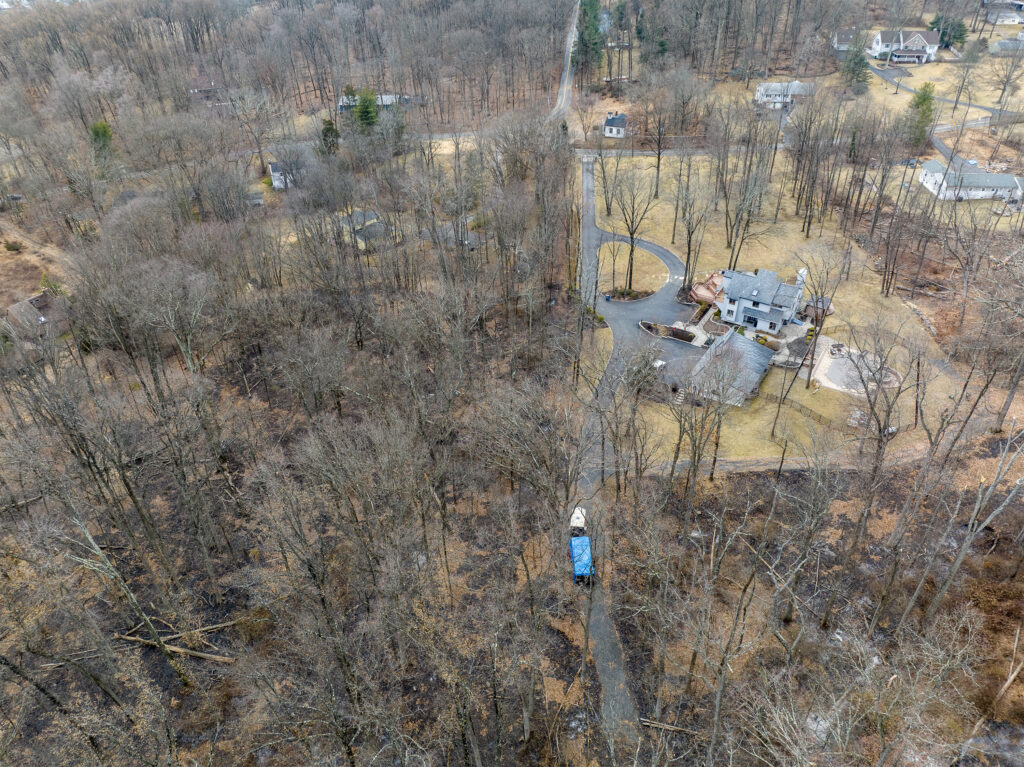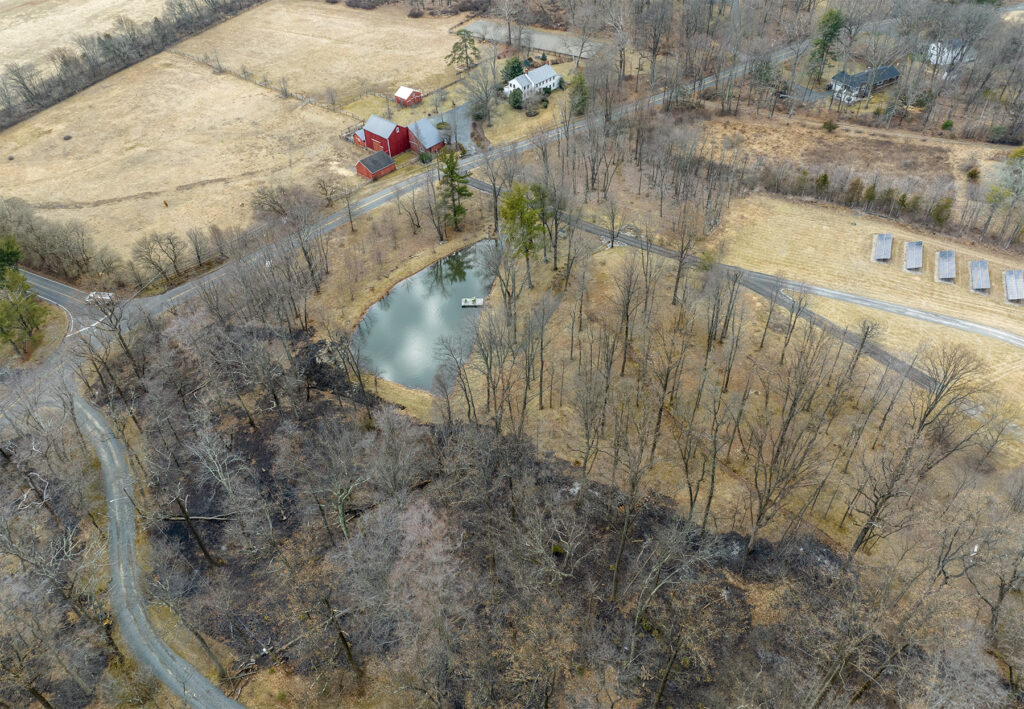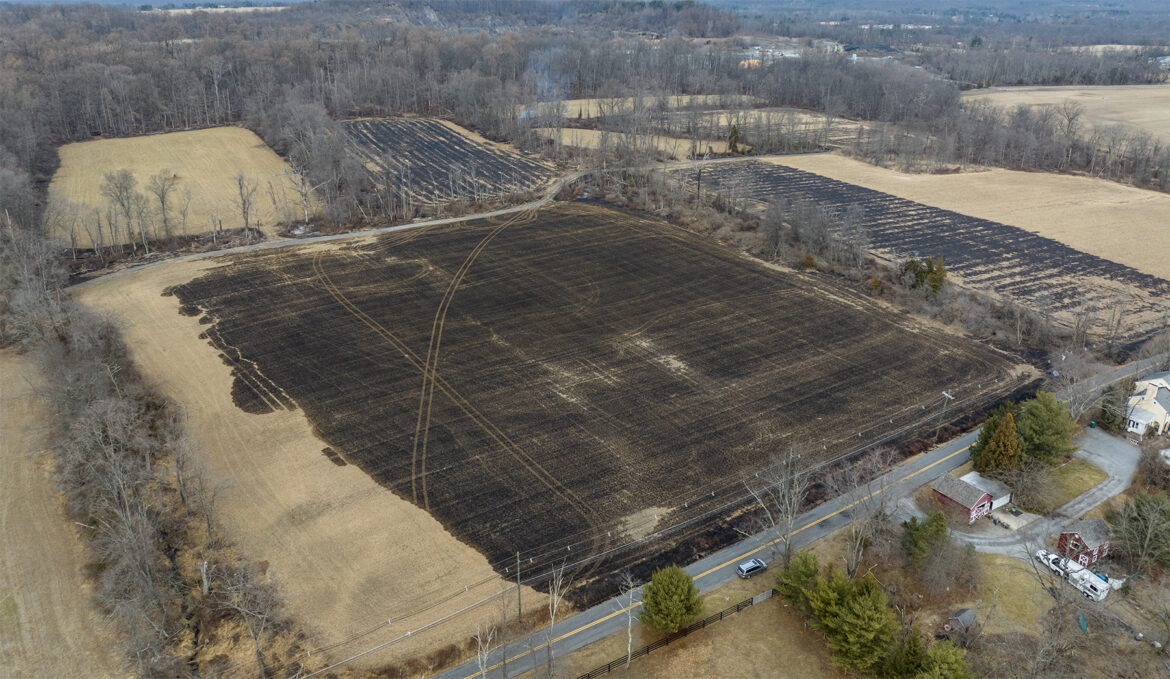A week after nearly 300 acres of forest burned in Hopewell Township, officials and residents alike are reflecting on the largest forest fire ever recorded in Mercer County. The fire, which erupted in between Woosamansa and Poor Farm Rd., was battled by about 250 firefighters from across the region. It was a stark reminder of the growing wildfire risk in New Jersey and the critical role of fire departments in protecting local communities.

A Rapidly Spreading Fire
The New Jersey Forest Fire Service (FFS) reported that as of 8 a.m. on Tuesday, March 4, the fire was 100% contained, having burned a total of 293 acres around Poor Farm Road. Initially, 34 structures were threatened, but no evacuations were required, and no structures were damaged.
The fire spread rapidly from its initial 75 acres last Saturday night. By Sunday, March 2 it had grown to 274 acres and was 80% contained. At that time, 30 residential structures and four commercial structures were considered threatened, prompting an aggressive response from local fire companies and the FFS. Roads, including Poor Farm Road and Woosamonsa Road, were closed to through traffic as crews worked tirelessly to contain the flames.
While the cause of the fire was initially under investigation, officials have since determined that a downed power line was responsible. Strong 30 mph winds, dry conditions, and rugged terrain quickly turned the flames into a fast-moving fire, challenging responders at every step.
“A combination of dry conditions, low relative humidity and a strong 30 mph Northwest wind caused the fire to rapidly increase and spread,” said Pennington Fire Chief Roger Demareski, who served as one of the Incident Commanders. “Access to the fields and wooded areas was limited, and the terrain posed challenges for firefighters.”
The Role of the New Jersey Forest Fire Service
New Jersey Forest Fire Service (FFS) Chief Bill Donnelly stated that the FFS is the primary agency responsible for responding to wildland fires across more than 3 million acres in New Jersey. The state is divided into 29 sections, each overseen by a Section Forest Fire warden, who manages any reported wildland fires.
“This is the first major wildfire in Mercer County since we began keeping records in 1906,” Donnelly said. A wildfire is classified as ‘major’ when it is more than 100 acres. The next largest wildfire in Mercer County was in 2024 and just four acres in size.
FFS crews remained on the scene for several days to monitor hot spots and smoldering trees until significant precipitation occurred on Wednesday.
Coordinated Efforts and Community Support

Containing such a fire required a massive, multi-agency response that included local, county and state involvement to help manage mutual aid and outside support.
Hopewell Township’s Office of Emergency Management provided logistical assistance, while the Hopewell Township Police Department used their drone to track the fire’s progression. The Hopewell Township Department of Public Works and Mercer County DOT supplied fuel for firefighting apparatus.

Firefighters worked tirelessly for days, supported by the Pennington Fire Company Auxiliary, Princeton First Aid Squad, and Mercer County Signal 22, who provided food, water, and rehabilitation services at the scene.
Increasing Wildfire Risk in New Jersey
The fire reflects a growing trend in New Jersey: more frequent and intense wildfires.
“New Jersey has seen a significant increase in wildfires at the start of 2025,” Donnelly said. Between January 1 and March 5, 2025, the FFS responded to 243 wildfires, burning a total of more than 899 acres. During the same period in 2024, there were only 69 wildfires, which burned 21.5 acres.
A 2023 report by the non-profit Climate Central found that the annual number of fire weather days has risen by 10 days in northern New Jersey and four days in southern New Jersey over the past 50 years. Data from their report mirrored the New Jersey Department of Environmental Protection’s 2020 Scientific Report on Climate Change, which showed that hotter and drier conditions could lengthen wildfire seasons and increase the frequency of large fires. These changes now mean that wildfire season in New Jersey is year round.
The Importance of Prescribed Burns
“There are many benefits to prescribed fire, which is a safe, effective and efficient means of managing the buildup of forest fuels that may contribute to the start and spread of a wildfire,” said Donnelly. “By actively eliminating sources of fuel that exacerbate forest fire risks through a prescribed fire program, the FFS reduces risk to New Jersey residents, visitors, property and the environment.”
Upcoming prescribed burns include one at the D&R Greenway land at the Betty Wold Johnson Hillside Farm Preserve and others to be rescheduled at the Pole Farm. Residents should be aware that these burns are weather-dependent and may be canceled if conditions are not suitable.

Protecting Homes and Containing the Fire
According to Demareski at the height of the fire, more than two dozen homes were in its path, particularly along Poor Farm Road and Woosamasa Road. Thanks to rapid action by firefighters, no structures were lost, and no injuries were reported.
The Role of Volunteer Firefighters

The fire also underscored the vital role of volunteer firefighters, who make up the majority of those responding to emergencies in the Hopewell Valley.
“Volunteer Firefighters have been the backbone of the fire service for many years in Mercer County,” Demareski said. “When the siren sounds, volunteers leave their families at a moment’s notice and respond to calls where they help neighbors in need. The tremendous response to this fire by our volunteers and the hundreds of hours worked saved many homes and prevented further spread of the fire.”
The Pennington Fire Company responded to 642 emergency calls last year alone. Demareski hopes that seeing a response like this helps residents see what the companies do and will consider joining their local fire company.
A Community’s Gratitude
The response from the community has been overwhelmingly positive. Residents brought food and water to first responders, expressed their gratitude on social media, and offered words of encouragement.
Preparing for the Future
In the aftermath of the fire, first responders are already shifting focus to the next potential emergency. Equipment is being cleaned, debriefing sessions are being held, and strategies are being refined to improve future responses.
“We will hold a debrief with all the responders to discuss what went right and what we can do better in the future,” Demareski said. “The best thing the community can do is recognize the critical role the Valley First Responders play and if they have an interest in learning more they should stop by one of the three volunteer firehouses and inquire as to how they can help.”







